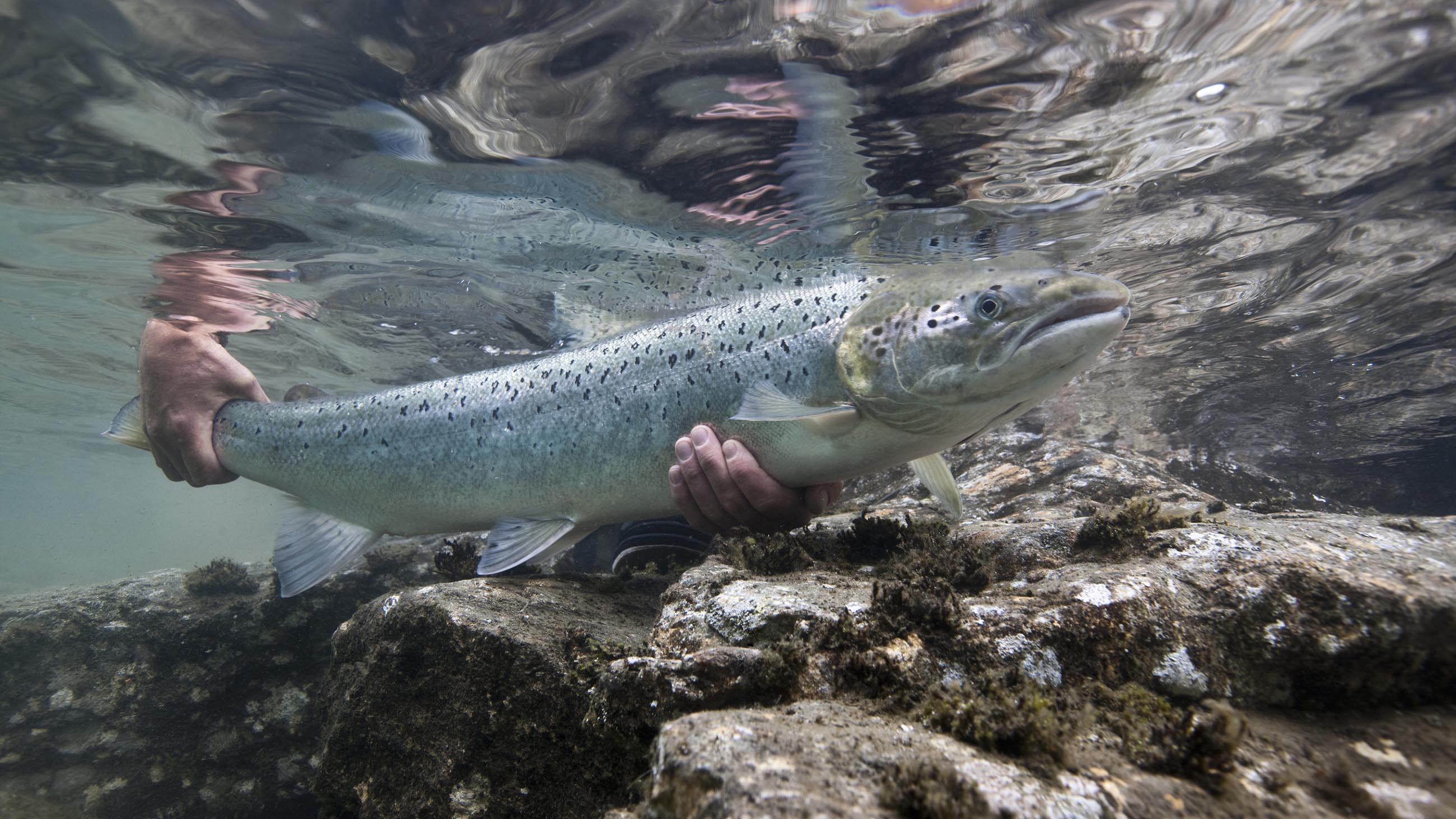Into the Wild: When Farmed Salmon Interbreed With Their Wild Cousins
As if contending with disease outbreaks, algal blooms, and even volcanoes weren’t enough, fish farmers may now need to pay extra attention to fugitives. Escaped salmon from fish farms in Norway are apparently spreading genetic material into wild Atlantic salmon populations and compromising their reproductive health, according to a new study.
The researchers, based at the Norwegian Institute for Nature Research (NINA), looked at over 20,000 fish in 147 salmon rivers and found widespread genetic introgression – the flow of genetic material from one gene pool into another – in 77 of the rivers sampled. Genetic material from farmed salmon – introduced by escapees breeding with non-farmed fish — was present in almost 50 percent of the wild populations tested.

“Half of the wild salmon populations in Norway have changed genetically by having proportions of farmed salmon origin, some with as much as 40 percent of their gene pool being of farmed origin, and on average 6.4 percent,” said Sten Karlsson, lead author of the study.
Farmed salmon are bred to grow big and grow fast, explains Karlsson. Those genetic traits, though important for the commercial success of farmed salmon, don’t work so well when mixed into wild populations.
“These traits are not favorable in nature and offspring from farmed salmon in nature have lower survival and fitness,” Karlsson wrote in an email.
An intrusion of farmed salmon genes into wild gene pools compromises the reproductive success of wild salmon, his study warns. According to a 2008 report by NINA and the United Nation’s Food and Agriculture Organization, “inter-breeding of farm with wild salmon can result in reduced lifetime success, lowered individual fitness, and decreases in production over at least two generations.”
Some researchers, erring on the side of caution, have called for making all farmed salmon sexually sterile — a means of restricting this gene flow.
Escapees also bring with them disease. Though more of a problem under the tight growing conditions of farmed salmon pens, pathogens like sea lice have been shown to infect wild salmon populations in Scotland, Canada and Norway, while salmon viruses have been found in escaped salmon in Norway. Infected escapees, the thinking goes, could trigger outbreaks in the wild.
The problem of escaped farmed salmon is nothing new, says Chris Harrod, a fish ecologist at the University of Antofagasta in Chile, which itself enjoys a robust farmed salmon industry. But more work is needed to understand the extent to which escapee genes influence wild populations — particularly when farmed and wild fish interbreed and create hybrid offspring.
Fully understanding those impacts, scientists suggest, is crucial, because the genetics of non-wild fish can alter the wild gene pool with remarkable speed — sometimes in as little as one generation. Precisely what new traits would emerge amid that genetic soup is largely unknown, and would be difficult to predict, and yet evidence suggests that the hybrid fish are just as likely to survive — and continue diversifying the gene pool — as their wild counterparts. “When they hybridize with wild fish, their offspring can show similar survival rates to wild fish,” Harrod said.
Karlsson’s study does suggest that some wild populations are more susceptible to intruders than others, but Harrod warns of another problem posed by escapees that aquaculturalists should consider: Once they’ve left the farm, they compete directly with native fish for resources.
“Escapee fish still need to eat,” Harrod says, “so even if they don’t reproduce, they take up habitat and food needed for native fishes.”










Comments are automatically closed one year after article publication. Archived comments are below.
Yes, populations often evolve, which is a good thing, as we are rapidly changing the environment in many ways.
However, farmed salmon are selected to grow fast when provided abundant food in fish farms. If many of these fish escape and move genes into wild salmon populations, they might ruin the ability of wild salmon to grow slowly, which is an important trait in organisms adapted to survive in the more food-stressed conditions usually encountered in the wild. This is an important point made in this article.
The gene pool is undergoing constant change. This is what is called evolution
Should it be at the hand of man with a fish artificially breed for traits nature has not chosen